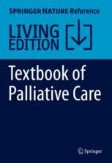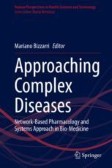Search
Search Results
-
Recommendations for the treatment of epilepsy in adult and pediatric patients in Belgium: 2020 update
To guide health care professionals in Belgium in selecting the appropriate antiepileptic drugs (AEDs) for their epilepsy patients, a group of Belgian...

-

-
Pathophysiology and Management Approaches for Epilepsy
Epilepsy is a neurological disease occurring as a result of disruption of the ion concentration balance in neurons. Another problem that accompanies...
-
In vitro antineoplastic effects of brivaracetam and lacosamide on human glioma cells
BackgroundEpilepsy is a frequent symptom in patients with glioma. Although treatment with antiepileptic drugs is generally effective in controlling...

-
Current neurologic treatment and emerging therapies in CDKL5 deficiency disorder
BackgroundCDKL5 deficiency disorder (CDD) is associated with refractory infantile onset epilepsy, global developmental delay, and variable features...
-
Characterization of Correction Factors to Enable Assessment of Clinical Risk from In Vitro CYP3A4 Induction Data and Basic Drug-Drug Interaction Models
Background and ObjectiveInduction of drug-metabolizing enzymes can lead to drug-drug interactions (DDIs); therefore, early assessment is often...

-
Physiology-Based Treatment of Myoclonus
Myoclonus can cause significant disability for patients. Myoclonus has a strikingly diverse array of underlying etiologies, clinical presentations,...

-
Genotype–phenotype correlation in contactin-associated protein-like 2 (CNTNAP-2) developmental disorder
Contactin-associated protein-like 2 ( CNTNAP2 ) gene encodes for CASPR2, a presynaptic type 1 transmembrane protein, involved in cell–cell adhesion and...

-
Pharmacotherapy of Seizures
Anti-seizure drugs play a vital role in the management of different types of seizure disorders. The choice of the anti-seizure medication depends on...
-
Differential Expression of the β3 Subunit of Voltage-Gated Ca2+ Channel in Mesial Temporal Lobe Epilepsy
The purpose of this study was to identify and validate new putative lead drug targets in drug-resistant mesial temporal lobe epilepsy (mTLE) starting...

-
The Management of Neurological Symptoms in Palliative Care
Neurological disease is a major cause of disability and death across the world. There is increasing evidence that palliative care is effective in...
-
Brivaracetam population pharmacokinetics in children with epilepsy aged 1 month to 16 years
PurposeThe aims of the study were to develop a population pharmacokinetic model of orally administered brivaracetam in paediatric patients and to...

-
The Speed of Hippocampal Processing of Contextual Information is Linked with Its Congruence with Previously Developed Schemas
One of the most important mechanisms underlying the flexible regulation of behavior is subjects’ ability to compare and integrate information about...
-
Sleep and Epilepsy
In people with epilepsy, sleep may be disrupted by nocturnal epileptic activity as well as by the use of antiseizure medications (ASM). Conversely...
-
The Efficiency of Multi-target Drugs: A Network Approach
Multi-target agents have attracted great attention in the last 15 years, as they are expected to provide more efficacious and safer therapeutic...
-
The fasciola cinereum of the hippocampal tail as an interventional target in epilepsy
Targeted tissue ablation involving the anterior hippocampus is the standard of care for patients with drug-resistant mesial temporal lobe epilepsy....

-
Pharmacogenetics in Epilepsy and Refractory Epilepsy
Pharmacogenomic studies in epilepsy are necessary due to the high prevalence of this disease and the high percentage of drug resistance phenotype....
-
Outcome measures in Angelman syndrome
BackgroundAngelman syndrome (AS) is a rare neurodevelopmental disorder characterized by severe intellectual disability, little to no expressive...

-
Early Treatment with Metformin Improves Neurological Outcomes in Lafora Disease
Lafora disease is a fatal form of progressive myoclonic epilepsy caused by mutations in the EPM2A or NHLRC1 / EPM2B genes that usually appears during...

-
Tiagabine and zonisamide differentially regulate the glial properties in an astrocyte-microglia co-culture model of inflammation
Due to the role of astrocytes and microglia in the pathophysiology of epilepsy and limited studies of antiseizure medication (ASM) effects on glial...

